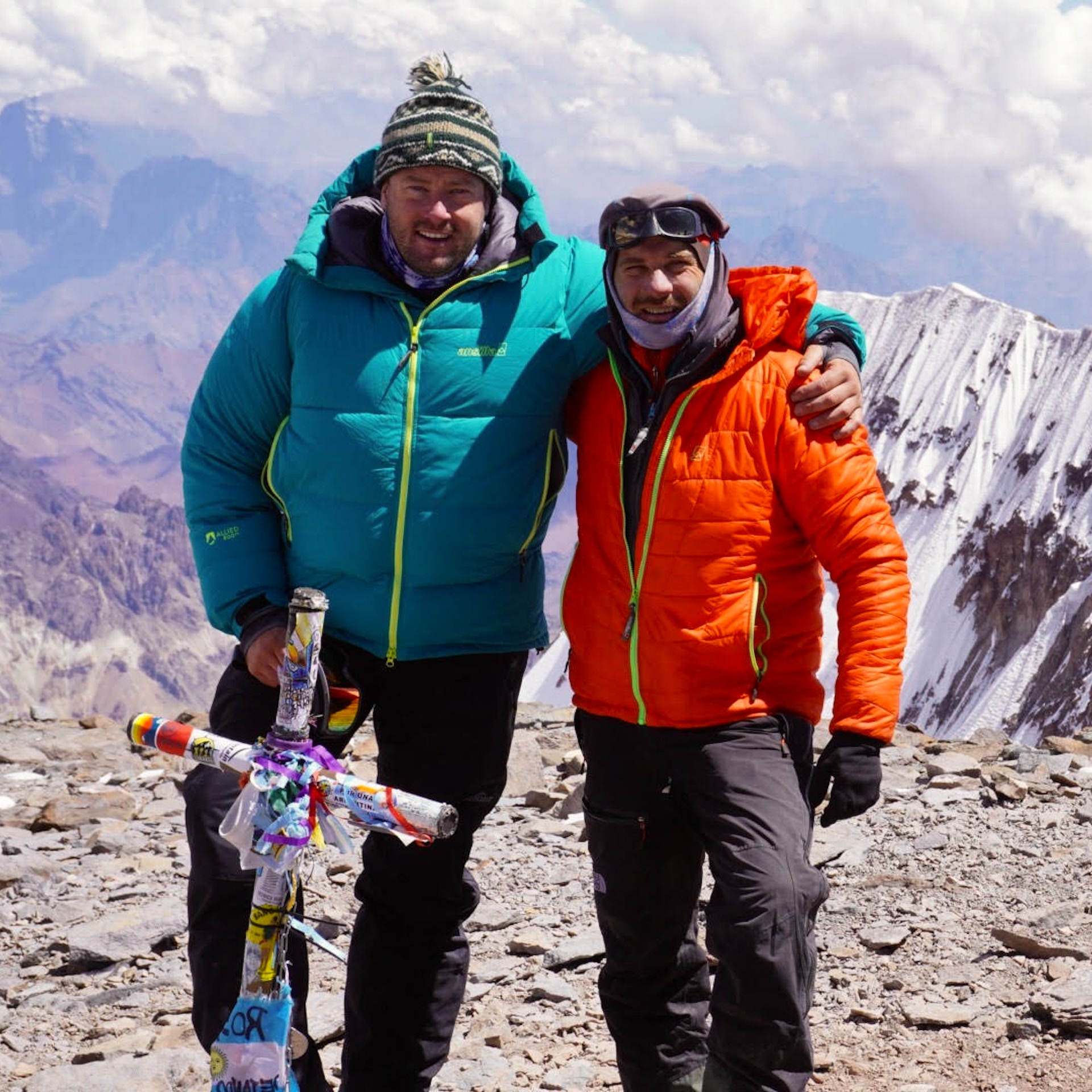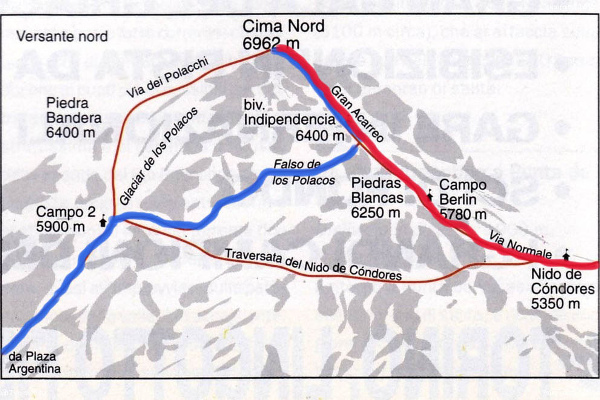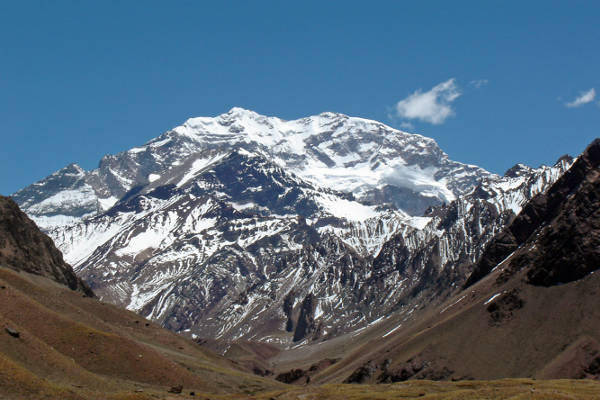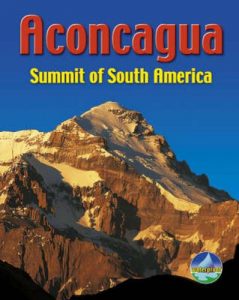On this page you will find a comprehensive and impartial guide to Aconcagua’s Polish Glacier Traverse Route aka Falso de los Polacos.
Aconcagua Polish Glacier Traverse Route
Overview
Part of the Seven Summits and, with one of the best views in all of South America, Aconcagua is a beautiful mountain to climb. From the top climbers get an incredible perspective of the surrounding Andean mountains, not to mention a taste of what it would be like to scale a full blown Himalaya peak.
The altitude of Aconcagua is such that many trekkers and climbers never reach the summit. Aconcagua has a very low summit success rate for the simple reason that people tend to underestimate her. Because some routes require no technical climbing skills, thousands of people every year attempt to reach the summit without realising just how difficult the altitude factor is.
The Polish Glacier Traverse Route is one of two routes on the mountain that require no technical climbing to reach the summit. The other route is known as the Normal Route and is more popular than the Traverse route as it’s 20% shorter.
The Polish Traverse, or the ‘False Polish Glacier Route’, is a stunning option for trekkers looking to get into high altitude climbing. It should not be confused with the Polish Glacier route however, as the Direct Glacier Route is a serious high altitude climb that involves considerable technical climbing sections. The Traverse route bypasses the glacier and traverses around it to meet up with the Normal route around 1,000 meters below the summit.
Because the Traverse route is 20% longer and requires climbers to wear crampons for certain snow sections, the Traverse route is seen as slightly more difficult than the Normal route. However, because of this, the Traverse route is a great way to get a feel for high altitude climbing. Trekkers considering taking on a Himalaya peak often climb Aconcagua to get a taste of what high altitude climbing is all about.
The Polish Traverse route is approached from the east side of the mountain via the Valle de las Vacas (Cows Valley). From there you head to Base Camp at Plaza Argentina (4200m) and then traverse around the mountain to approach the summit from the North-west side.
Please Note: Standing at just under 7,000 meters, Aconcagua is not to be taken lightly. The weather is often hazardous and conditions near the summit are well below freezing most of the year. Many climbers have said that they felt colder on the summit of Aconcagua than they did on Everest! Therefore, wearing the right gear is essential.

Join an Aconcagua Climb
Book with our recommended local guide
Regional Map
Below is a map detailing the various route up Aconcagua. The Aconcagua Polish Glacier Traverse Route is highlighted in blue.

Typical Itinerary
Below is a detailed Aconcagua Normal Route itinerary. Please note that route itineraries vary slightly depending on what operator you use and time of year you climb.
Day 1-2
Day 3
Day 4
Day 5
Day 6
Day 7
Day 8
Day 9
Day 10
Day 11
Day 12
Day 13
Day 14
Day 15
Day 16-17
Day 18
Day 19
Day 20-21
Recommended Guidebook
We recommend Aconcagua: Summit of South America by Harry Kikstra.
For more Aconcagua guidebook recommendations and literature check out our Library.

Join an Aconcagua Climb
Book with our recommended local guide
Polish Glacier Traverse FAQ
How much does the Polish Glacier Traverse cost?
Using a commercial operator, the climb will set you back something in the region of US$3,500-$5,000. This is excluding flights, personal gear and tips.
Are permits required for the Aconcagua traverse route?
Yes. However, permit costs vary depending on when you trek and how you trek. Trekking alone is more expensive as is trekking in the high season. Permits cover a consultation with a doctor at Base Camp and helicopter evacuation should you require it. You can purchase a permit from the office of tourism in the centre of Mendoza. You’ll need to purchase it yourself as other are not allowed to do this for you. Make sure to bring your passport. For more information on Aconcagua permits please click here.
How difficult is the Polish traverse route?
The difficulty of climbing Aconcagua is often underestimated as it is for the most part non-technical. We recommend that only experienced hikers who have previously been to high altitude to attempt the climb. You will need a high level of fitness, determination and endurance. Only 40% of climbers who attempt the Aconcagua each year actually reach the summit! The Aconcagua Polish Glacier Traverse Route require no technical climbing skill but there may be sections where you need to use crampons.
Other Aconcagua routes:


